#jewish tradition
Text
During the distribution of the maror at the Seder, I take one look at the innocuous white herb. “So this is the bitter thing?”
I pop the entire thing into my mouth and begin to chew. And everyone else, including the rabbi, did exactly that apparently because five seconds later, all of us are screaming.
It’s not so much bitter as much as “oh my lord, my nose is on fire, my nose!!”
#it was horseradish#fromgoy2joy thoughts#jumblr#jewish#jewish convert#jewblr#jewish tumblr#jewish conversion#jewish humor#passover things#passover#chag pesach sameach#judaism stuff#judaism#jewishness#jewish tradition
23 notes
·
View notes
Text



Matzah holder with seder plate from the collection of the Hungarian Ethnographic Museum
This stand, carved from tropical wood and covered with embroidered textile sheets, was collected by Gyula Grünbaum in Sopronkeresztúron (now Deutschkreutz, Austria) in 1913. From the 17th century onwards, important Jewish communities were established in the seven field towns of the Esterházy estate. The famous Talmudic school of Sopronkeresztúr, known in Hebrew as Zelem, attracted young people from far and wide. Most of the Jewish objects in the Ethnographic Museum come from this village. In the early 1910s, Grünbaum collected ritual objects in Sopronkeresztúr that were rarely or never used by the Jewish community. Both the changing customs in the traditionalist settlement and the worn condition of the objects could have justified their sale.
Four carved columns hold the three shelves for the maces and the fourth, upper shelf, the 'seder tray', which holds six bowls on legs for ritual food. On the textile covering are embroidered Torah quotations in Hebrew for the Passover feast: "And the people carried their dough before it was boiled, tying their pots into their clothes on their shoulders." (Exodus 12:34) "And they baked the dough, (...) a leavened cakes" (Exodus 12:39) "And they ate the flesh that night, roasting it on the fire, with unleavened bread and bitter herbs." (Exodus 12:8).
22 notes
·
View notes
Text
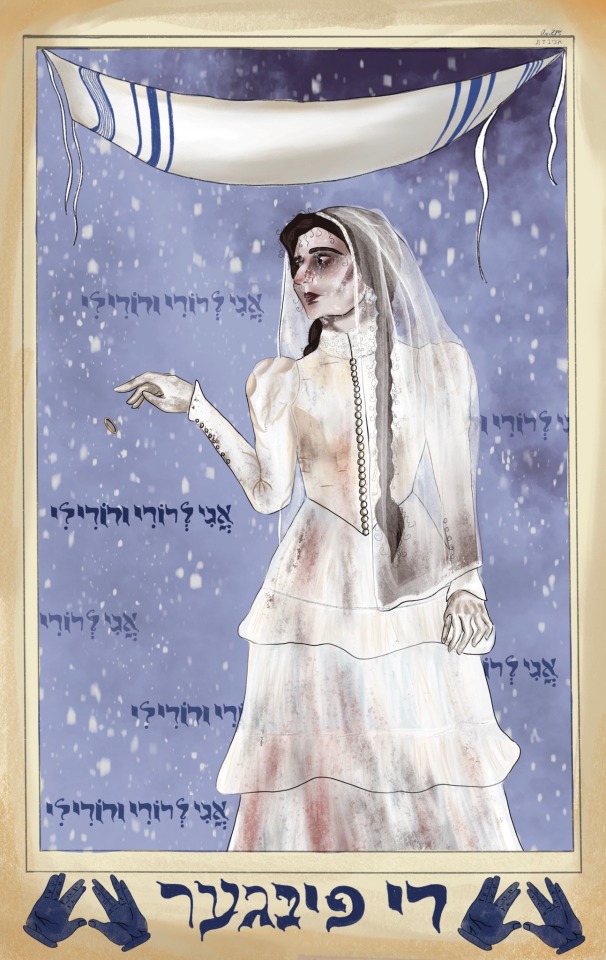
As Halloween approaches, I’ve been seeing many very talented makeup artists recreate the face of the bride in Tim Burton’s “The Corpse Bride.” I thought this would be a good oppertunity to make some art and remind one and all that the “The Corpe Bride” (known in some tellings as “The Finger” or “The Demon in the Tree”) is a beloved Jewish folktale. Folklorist Howard Schwartz traces the orgins of “The Finger” to 16th century Levant. Aftrer hundreds of years of retelling, the story, like all folktales, has undergone many iterations and also became highly informed by the violence of life in the Pale of Settlement (specifically towards women and young brides).
If you'd like to support me, you can do so here <3
#digital art#art#original art#jewish#jewish art#jewish culture#jewish tradition#jewish things#jewish folklore#jewish folktales#jewish folktale#jewish history#jumblr#folkart#folk art#jewish folk art#jewish folkart#halloween#the corpse bride#der finger#the finger#the demon in the tree#tim burton#tim burton corpse bride#corpse bride#jewish artist
917 notes
·
View notes
Text
Hey Jews of Tumblr!
What's your favorite Jewish practice? This can be anything, whether it be a mitzvah that you find really important, a holiday practice, a Jewish value, etc.
Personally I like the fact that we are encouraged to question everything. I don't like taking things at face value and need to understand them, which is why I appreciate not only the acceptance, but also the encouragement of questioning things.
Goyim, do not respond. Those in the conversion process are welcome!
308 notes
·
View notes
Text
Me and my brother have this tradition on Passover, we see who can get tired of “The Prince Of Egypt” first. Basically from April first we try to watch PoE everyday till Passover and see who stops first, currently I’m winning.
#am yisrael chai#jewblr#jewish#jumblr#passover#jewish tumblr#jewish things#jewish tag#jewish tradition#the prince of egypt#and in one of my classes we’re having a lip sync battle and I’m doing Deliver us#number one is to be dramatic and number two is to celebrate Passover
51 notes
·
View notes
Note
I started reading When the Angels Left the Old Country after I saw it recommend on your blog and I’m OBSESSED and I just think EVERYONE needs to know about it. The flavor, the Jewish, Yiddish, alter velt flavor of this book- impeccable.

Literally excuse me??? Screaming??? At this opening??? When do we ever get books like this?? Well written, plotted, just chef’s kiss??? Talk about a book that makes you proud to be a part of its heritage (disclaimer I have only read through chapter 4 lol).
i know. ohhhh i know. it's that feeling of recognition. the feeling of the familiar cadence of Yiddish that comes through, even in the English. it's the folk traditions, barely remembered from childhood. it's the way that this little angel and demon are Jewish. the little angel is genderless, and refers to itself as "it". the little demon is one of the sheydim. and yet the little demon is terrorized by the goyishe demons in the towns nearby. it's the way that they have always been here. the way that Shtetl grew up around them. it's the way that they care about the little villagers.
it's that feeling of someone taking us by the hand and saying, "yes. i know. i see you. these are our stories".
#i've been pausing every few pages because i start tearing up...#when the angels left the old country#sacha lamb#judaism#jumblr#jewish history#jewish literature#jewish tradition
116 notes
·
View notes
Text

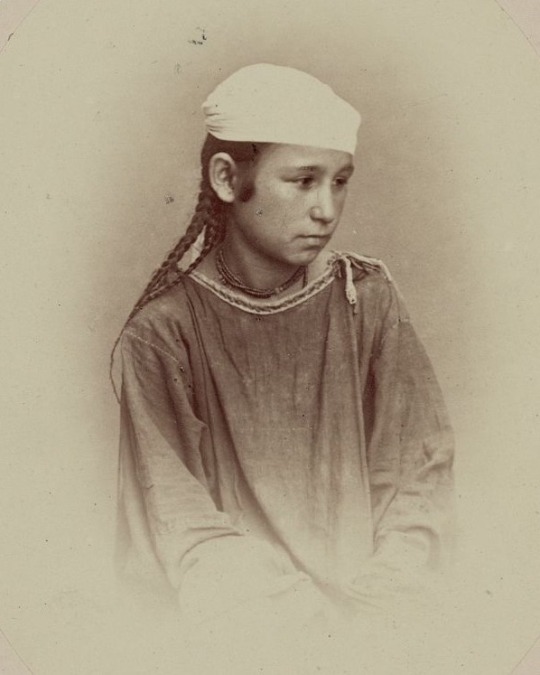
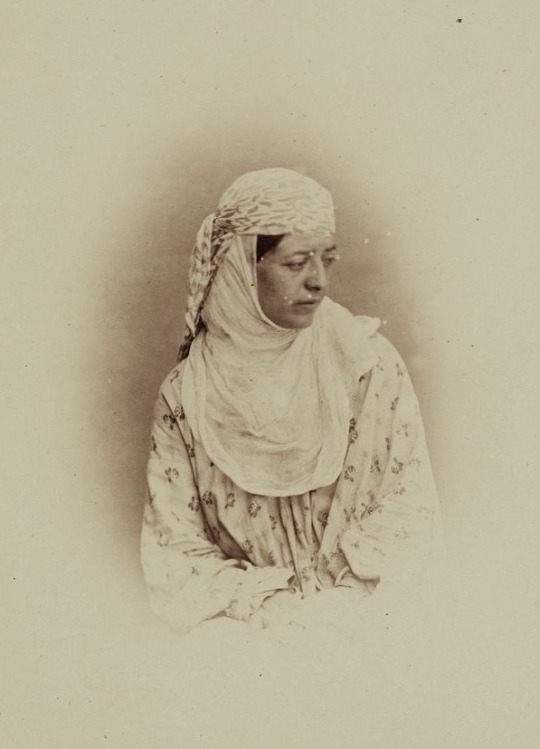






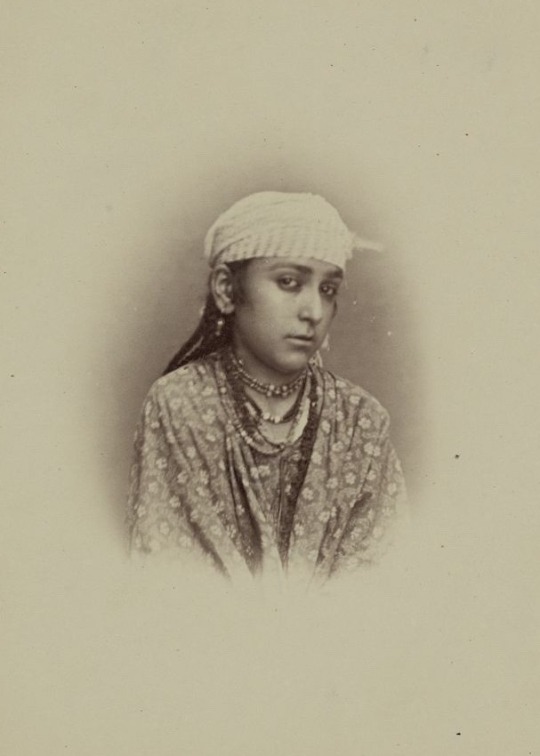
Jewish women of Turkestan Krai, Central Asia.
Anonymous photographer, c. 1865-1872.
#jewish#1860s#1870s#old photos#women#*#jewish history#early photography#19th century#antique#jewish tradition#old photography#jewish women#historic photographs#antique photo#women in history#nineteenth century#vintage style#jewish tumblr#jews of tumblr#vintage#historical photos#jewblr#women in photography#vintage photography#old photo#photography#vintage women
67 notes
·
View notes
Text
Hi, all! I know I have some asks to reply to and I will, but this weekend is Rosh Ha'Shana, the Jewish New Year, and I will be with my family. I hope you can be patient with me until I can reply to you.
To all Jews who see this: may a year and its curses end, may a year and its blessings begin.
As we watch antisemitism rise, as hatred in general intensifies, I am going to choose to intensify my love. I will love you, my fellow Jews, more than ever, and I will love you, my fellow humans, more than ever. May we all find the blessing that exists in each day.
Adding a Yemenite Jewish traditional song for Rosh Ha'Shana performed in a modern (and lovely IMO) arrangement.
Shana tova u'metuka!
youtube
#personal#judaism#jewish#jew#jews#jumblr#frumblr#rosh hashanah#antisemitism#jewish music#music#jew stuff#jewish stuff#jewish culture#jewish things#jewish thought#jewish tradition#love is the answer#Youtube
121 notes
·
View notes
Text
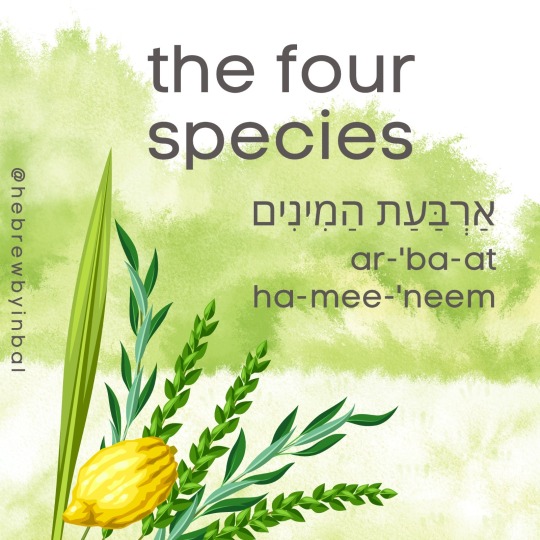
It is that time of the year to welcome The Four Species, known as ארבעת המינים ar-'ba-at ha-me-'neem in Hebrew.
This set includes the loo-'lav לולב (Palm Branch), et-'rog אתרוג (Citron),ha-'das הדס (Myrtle Branch), anda-ra-vah ערבה (Willow Branch).
Together, these four species are more than just plants; they're a deeply symbolic ensemble that captures the essence of Sukkot and offers insights into life itself.
The tradition of bringing them together serves as a potent reminder of unity and diversity. Each species has its own form, fragrance, and feel, and it's precisely these differences that make the ritual so impactful.
When you wave them in all six directions—north, south, east, west, up, and down—you're acknowledging that the divine is everywhere and in everything. You're also emphasizing the importance of coming together as a community, embracing our differences, and celebrating our shared values.
In the coming days, I'll be diving deeper into the unique characteristics and meanings behind each of these Four Species, so stay tuned for that.
In the meantime, as you celebrate Sukkot, let the unity symbolized by the Four Species inspire you to build a more inclusive and compassionate world.
khag sa-'me-akh! 🌿 חג שמח
#sukkot#jewish culture#jewish tradition#hebrew#jewish#learnhebrew#hebrewbyinbal#language#hebrew langblr#israel#jew#torah#trending#jewish tumblr
70 notes
·
View notes
Text
Ethan Freeman performs Stephen Sondheim's "No One Is Alone" at "Together at Hanukkah" an event of love and light for the Jewish community and raise money for the MDA the Magen David Adom the Israeli paramedic organization.
You can watch the full show featuring stars including Tovah Feldshuh and Avi Hoffman on Behindthemirrorofmusic.com here you can also find ways to donate.
---
Ethan Freeman has been a beloved star of the stage for over fourty years. His credits include being the first Jewish actor in history to perform the role of The Phantom in The Phantom of the Opera (performing the role on West End and also in Toronto, Vienna and Germany,) and being chosen by Disney to originate the role of "The Beast" for Disney’s Beauty and the Beast European premiere.
Other credits include: Javert in Les Miserables (West End,) and creating the dual role of Jekyll and Hyde for the original German premiere.
In recent years he has also become known for another artform: painting. Since October he has used this medium to fundraise for the MDA, donating the money for every painting sold to the charity.
#ethan freeman#poto#phantom of the opera#european musicals#stephanie brown#into the woods#jewish heritage#jewish tradition#jewish holidays#jumblr#jewish history#jewish
50 notes
·
View notes
Text

Happy Jewish new year to everyone!
#jewish good omens#jewish new year#shana tova#rosh hashanah#good omens comics#good omens#crowely#snake crowley#aziraphale#garden of eden#apple and honey#jewish tradition
120 notes
·
View notes
Text
99.96 percent of the year when I go to a museum: oh my gosh! Egyptian artefacts . What a complex society. Love their things with cats!
Me in the two week lead up to Pesach, staring daggers at random pharaoh 8,789’s bust, gripping the visitor’s guide in my hand: oh you fuckers.
#fromgoy2joy thoughts#jumblr#jewish#jewish convert#jewblr#jewish tumblr#jewish conversion#jewish humor#pesach#Passover#Passover things#Passover posting#Pesach things#jewish tradition#jewishness#jewish history
487 notes
·
View notes
Text
Ashkenazi Jews, particularly those of Eastern Europe, would take part in the practice of soul candles, or ner neshama. Feldmesterins, or cemetery measurers, who were typically older women within the community, would walk through the Jewish cemetery blessing thread as it is wound. Very often it would be done in groups or pairs, with one winding the thread as the other held the ball. Once the ritual of grave measuring (Keyvermestn) was complete, the blessed thread is turned into candles--known as Kneytlekhleygn or "wick laying". Read more
#jewish#jumblr#judaism#ashkenazi#jewish tradition#jewish magic#jewitches#jewitch#magic#yom kippur#candles#soul candles#folklore#folk magic
270 notes
·
View notes
Text
Happy european day of jewish culture!
Last year I visited the synagogue while today I went to the archive where are kept the documents from 1500’s to nowadays. It was really interesting, I would’ve stayed to listen to the guide for hours.
Here some photoes of the synagoue from last year:
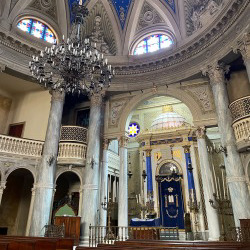
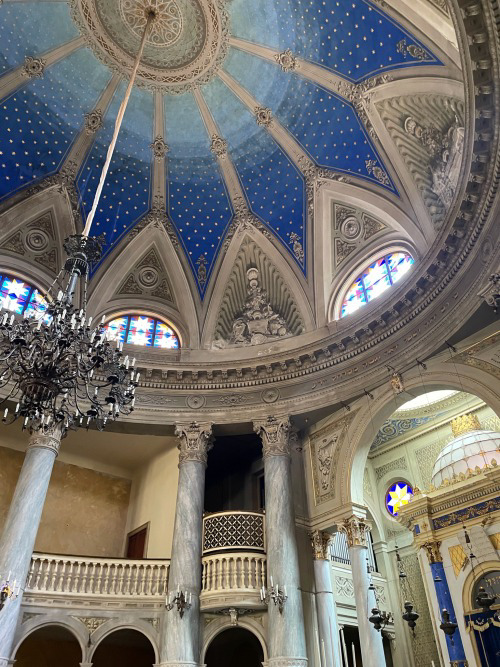
#european day of jewish culture#jewish community#jewish history#jewish tradition#synagogue#jumblr#europe
33 notes
·
View notes
Text
I love the idea that the frog plague wasn’t multiple little frogs that ate plants, it was just one giant frog that ate people.
HaShem really popped off with that one.
#jewblr#jewish tradition#jewish tumblr#jewish#jumblr#passover#pseach#judaism#jewish humor#jewish holidays#frogs#imagine if it had a kippah
22 notes
·
View notes
Text
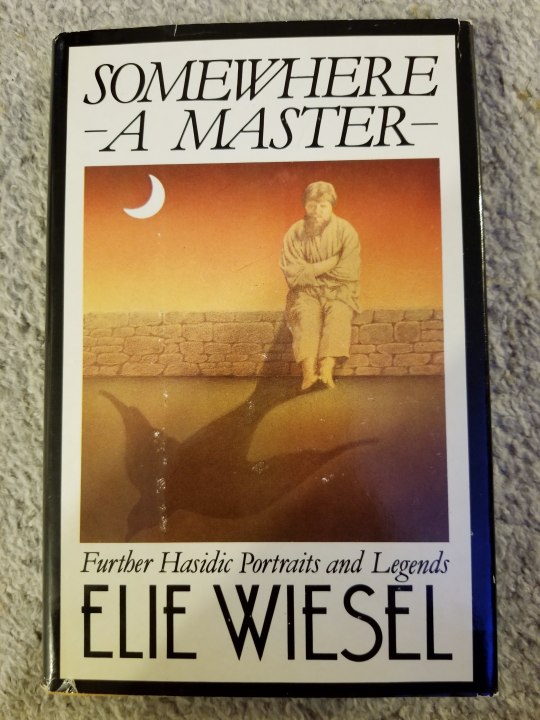
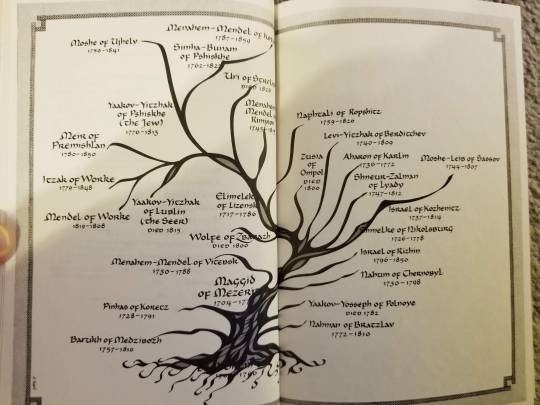
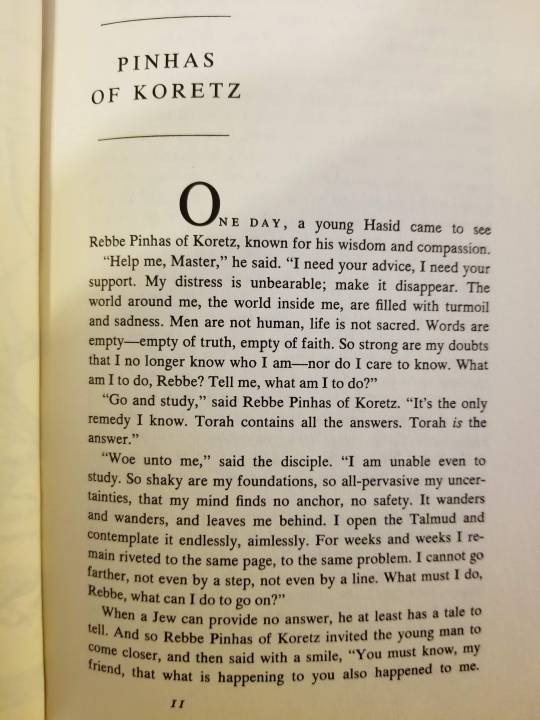

today i opened Elie Wiesel's second volume of portraits of 18th and 19th century Hasidic masters. and i came upon this story about Rebbe Pinhas of Koretz.
Wiesel's portraits continue to resonate through the years. and the wisdom they offer is more relevant now than ever.
as Wiesel says, "a good story in Hasidism is not about miracles, but about friendship and hope — the greatest miracles of all".
that's true of the Jewish community too. the Jewish community continues to be a place of friendship and hope in the face of darkness.
here is the full text of Wiesel's anecdote:
.
One day, a young Hasid came to see Rebbe Pinhas of Koretz, known for his wisdom and compassion.
“Help me, Master,” he said. “I need your advice, I need your support. My distress is unbearable; make it disappear. The world around me, the world inside me, are filled with turmoil and sadness. Men are not human, life is not sacred. Words are empty — empty of truth, empty of faith. So strong are my doubts that I no longer know who I am — nor do I care to know. What am I to do, Rebbe? Tell me, what am I to do?”
“Go and study,” said Rebbe Pinhas of Koretz. “It's the only remedy I know. Torah contains all answers. Torah is the answer.”
“Woe unto me,” said the disciple. “I am unable even to study. So shaky are my foundations, so all-pervasive my uncertainties, that my mind finds no anchor, no safety. It wanders and wanders, and leaves me behind. I open the Talmud and contemplate it endlessly, aimlessly. For weeks and weeks I remain riveted to the same page, to the same problem. I cannot go farther, not even by a step, not even by a line. What must I do, Rebbe, what can I do to go on?”
When a Jew can provide no answer, he at least has a tale to tell. And so Rebbe Pinhas of Koretz invited the young man to come closer, and then said with a smile, “You must know, my friend, what is happening to you also happened to me. When I was your age I stumbled over the same obstacles. I, too, was filled with questions and doubts. About man and his fate, creation and its meaning. I was struggling with so many dark forces that I could not advance; I was wallowing in doubt, locked in despair. I tried study, prayer, meditation. In vain. Penitence, silence, solitude. My doubts remained doubts. Worse: they became threats. Impossible to proceed, to project myself into the future. I simply could not go on. Then one day I learned that Rebbe Israel Baal Shem Tov would be coming to our town. Curiosity led me to the shtibl, where he was receiving his followers. I entered just as he was finishing the Amida prayer. He turned around and saw me, and I was convinced that he was seeing me, me and no one else. The intensity of his gaze overwhelmed me, and I felt less alone. And strangely, I was able to go home, open the Talmud, and plunge into my studies once more. You see,” said ready Pinhas of Koretz, “the questions remained questions. But I was able to go on.…”
What did Pinhas of Koretz try to teach his young visitor? One: Not to give up. Even if some questions are without answers, go on asking them. Two: Doubts are not necessarily destructive — provided they bring one to a Rebbe. Three: One must not think that one is alone and that one's tragedy is exclusively one's own; others have gone through the same sorrows and endured the same anguish. Four: One must know where to look, and to whom. Five: God is everywhere, even in pain, even in the search for faith. Six: A good story in Hasidism is not about miracles, but about friendship and hope — the greatest miracles of all.
#this was exactly what i needed to read today...#jewish history#jumblr#judaism#jewblr#jewish tradition#elie wiesel
82 notes
·
View notes